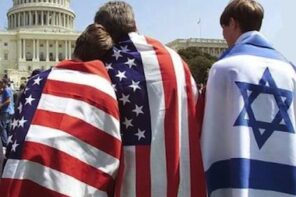We’re studying theories of baptism in the college course I teach on prayer, worship, and the sacraments. Just yesterday we reviewed New Testament imagery for baptism: union with Christ, forgiveness of sin, the like. The one that really stands out at the moment, though, is incorporation into the church, otherwise known as Christ’s body. James F. White writes,
Probably the most egalitarian statement in all of scripture is Paul’s assertion that for those “baptized into Christ…there is no longer Jew nor Greek, there is no longer slave or free, there is no longer male and female; for all of you are one in Christ Jesus” (Gal. 3:27-28; see also 1 Cor. 12:13).
Paul finally failed to live up to the radicalism of this passage, of course. The religious institution he helped shape in its infancy hasn’t done any better. The whole point of the passage is that the Galatians aren’t treating one another as equal, and Paul rips them a new gospel, as it were. Some days, it seems like not much has changed.
But as I pointed out to my students, it is a radical statement. It becomes ever more so as modern Christians begin to add clauses to it like “black and white,” “disabled or non-,” “gay nor straight.” Even in the last few days, an intense debate over Princeton Seminary’s take-back on an award to conservative pastor Tim Keller points to how relevant the question of inclusion and its limits is to modern Christianity. You can’t go anywhere in the church world without somebody wondering who’s included in God’s covenant and who—if anyone—isn’t. Even in the conservative communions, most laypeople come down on the side of universalism.
Which is why I’d like this to be true; I really, really would:
How might religious nonattendance lead to intolerance? Although American churches are heavily segregated, it’s possible that the modest level of integration they provide promotes cross-racial bonds. In their book, Religion and Politics in the United States, Kenneth D. Wald and Allison Calhoun-Brown reference a different theory: that the most-committed members of a church are more likely than those who are casually involved to let its message of universal love erode their prejudices.
That’s Peter Beinart writing in The Atlantic about his idea that the culture over sexuality has been largely replaced with racial and partisan divisions funded by American secularization.
It’s an intriguing hypothesis, and Beinart marshals an impressive array of evidence in its favor. It’s certainly difficult to argue against the basic correlation Beinart sees: America is getting more secular (or at least much less observant), particularly among the white working class. That same class is despairing of its aspirations for upward mobility, and at least among their evangelical members, the less frequent attenders tend to have less tolerance for Muslims, blacks and Hispanics. (Oddly, they’re more tolerant of gays and feminists.)
An article in The Christian Post, of all places, explains what might be going on here. One idea is that as people leave the practice of Christianity, a residual “civic religion” promotes a nationalistic worldview masquerading as faith. Another is that church communities convince participants that they are called together for a greater good that transcends their particular identities. A third says that churches are by nature “messy families” that force members to co-exist with differing perspectives.
Those are all decent insights. Any one of them could be the causation to go along with Beinart’s correlation. Still, his theory shouldn’t be mistaken for proven fact. There are problems here. For one thing, while Beinart cites a handful of more-or-less related polls and studies, there’s no real body of literature focusing on this specific question. He could very well be right, or he could be cherry-picking data out of context. Do we know for certain that the lack of religious practice and racism is linked in white Evangelicals? There’s a pretty good survey that says so, yes, but it is only one. Can we be sure that alienation from religion erodes trust in social and political institutions, or vice-versa? Those are reasonable inferences, but again, there’s no solid proof.
Do we know that less religious evangelicals support Trump in higher numbers than their more pious friends? Actually, we do! Or at least we did, when Trump outpaced Ted Cruz in the Republican primary last year. In the general election, Trump’s support among evangelicals rose with attendance, which is the normal pattern for Republican candidates.
I’m not sure Beinart’s mirroring of white nationalism on the right and the Black Lives Matter movement on the left works out as well as he intends. There are structural differences, not to mention differing power dynamics. (To be fair, he does consider both.)
Perhaps most seriously, there’s nothing in religious disaffiliation that requires Beinart’s perceived shift from a nation’s desire for “institutionalist” reform to a bloody-minded desire for “insurrection.” There is, however, quite a lot about the advancement of women and racial minorities over the past few decades that might explain it.
Listen, I’m a small-church pastor who’s spent quite a bit of time with white farmers, factory workers, and petty bourgeoisie of all kinds. I would love to discover that the church was capable of limiting social and racial animosity with a message of universalism. They didn’t teach me “Kumbaya” as a kid for nothing. I’ve even seen a little tolerance grow in the church from time to time. It does happen.
Beinart’s probably right that religious participation brings down cross-cultural hostility. Any kind of social participation would do that, but religious institutions, like schools, are particularly effective because they consistently push the message of wider community. My firm belief is that the small church is God’s engine for social change, for that very reason.
But there are big drawbacks to mediating social difference through the church, which more than anything is the weakness of Beinart’s argument. For one thing, people tend to draw the boundaries of their community pretty narrowly. It’s one thing to talk about tolerance between Protestants and Catholics, for example, and quite another to confront white privilege. Likewise, people tend to see specific members of a group differently than the class generally: the black family down the block are swell, but when “they” run the city, it’s no good. My Republican next-door neighbor would do anything to help me with the lawn, but those GOP people in Congress are a threat to life, liberty, and justice!
As well, the kumbaya effect tends to be short-lived. Like any Christian teaching, it has an embarrassing tendency to wear off between Sunday and Sunday. People often forget the brotherhood of humanity when they go back online or watch cable news. That’s true even when they tell you how much they worry about partisanship.
The religious realm—not just Christianity, but all sorts of faiths—can moderate conflict and even help create the conditions for reconciliation. But it’s never perfect; it’s always subject to outside forces, and it takes a long time. In 1844, the Methodist church split over the question of slavery. It wasn’t until 1939 that the Northern and Southern halves of the communion came back together, and even today, divisions linger. Catholics and Orthodox believers are still trying to work out differences from the 11th century.
As a pastor, I trust in God’s good time. The kind of changes that need to happen in our society are generational, not anything that will happen overnight. I even believe the proper forum for that kind of change is a small community of believers called to reach out beyond the bounds of homogeneity. From a political perspective, though, I have a harder time believing that going to church will save our skins from the likes of Steve Bannon or Seb Gorka. Living into baptism is always aspirational on some level. As long as that’s the case, I wouldn’t count on it washing away the sins of white nationalism anytime soon.



